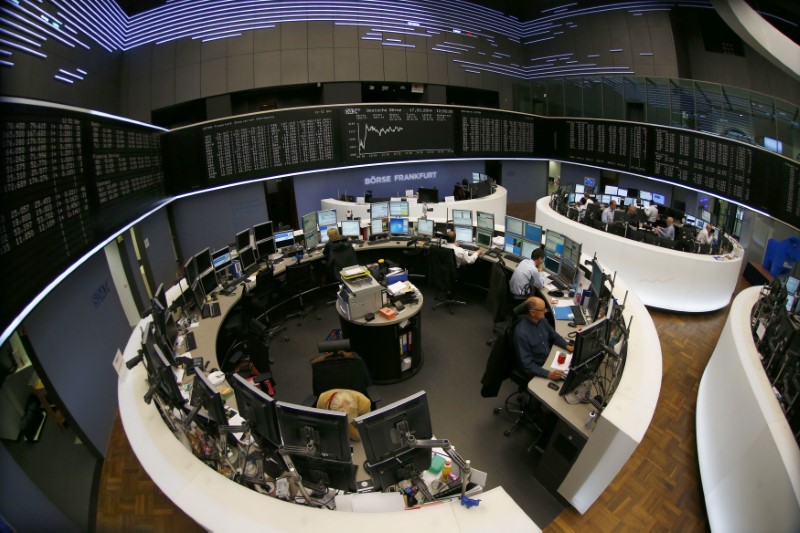By Sujata Rao
LONDON (Reuters) - European funds reckon the end may be nigh for a multi-year bull run in junk-rated bonds, slashing allocations to two-year lows, even though most expect the global equity rally to extend into 2018.
Reuters' monthly asset allocation poll found investors based in mainland Europe had trimmed equity exposure in November, possibly with an eye on year-end after enjoying 20 percent gains on world stocks (MIWD00000PUS).
Very few however thought the market had peaked.
The poll of 19 European asset managers was conducted between Nov. 14-28 as equities surged to new highs, fed by solid profit growth as well as conviction that monetary policy under new U.S. Federal Reserve head Jerome Powell would tighten very gradually.
But it was also a time when high-yield, or "junk" bond funds suffered a fourth straight week of outflows, with yields suddenly spiking 40 basis points before easing .
The week ending Nov. 15 saw junk funds shedding $4.4 billion, the fourth-highest weekly outflow on record, Lipper data showed. Many saw the moves as signaling trouble for a sector that has benefited hugely from rock-bottom global borrowing costs as well as investors' hunt for higher-yield assets.
Yields stand at around 5.2 percent, half of late-2011 levels.
But as many central banks exit their super-easy credit policies, the sector is looking vulnerable.
"Over the past 10 years, high yield debt investors have enjoyed a once in a lifetime rally ... Going forward there will be no rising tides lifting all boats," said Jean Médecin, member of the investment committee at Carmignac.
"With a backdrop of increased corporate leverage, it's no surprise that the gradual normalization of monetary policies has led to some volatility pick-up."
Asked if the high-yield bull market was over, more than 70 percent of those who responded answered in the affirmative. In their bond portfolios, high-yield exposure fell to 14.5 percent -- 1.6 percentage points down from October and off a 21.6 percent peak in April.
Some reckon junk debt spreads may grind tighter, given the buoyant global economy, but see little room for big gains.
"We are already playing into extra time, worsening the risk-reward trade off for the asset class," said Robeco strategist Peter van der Welle, who is underweight high-yield debt.
But this year's scintillating run in equities and emerging markets may have further to go, investors said. While equity allocations were cut slightly to 44.7 percent, only 20 percent of those answering a special question said the stock market bull run was ending.
In fact, exposure to U.S. equities -- which have hit successive records recently thanks to tech stocks, hopes of tax reform and the possibility of looser bank regulations -- was increased to 38 percent, the highest since April.
"Investors can be reassured by the strength and durability of the current economic cycle. Valuations seem stretched. But taking into account forecasted earnings for 2018, price/earnings ratios don't look that stretched," said Jan Bopp, asset allocation strategist at J Safra Sarasin.
Many warned though that risks such as higher inflation, a slowing Chinese economy, central bank policy and politics could derail the rally. While anticipated political risks have failed so far to materialize in 2017, a minority highlighted potential disruption from Italy's early-2018 election.
Right-wing and anti-establishment parties could be among the leaders in the election, raising fears of political gridlock that would hinder reforms in the highly indebted nation.
"We believe Italy's political risk is currently underpriced," said Vincent Chaigneau, head of research at Generali (MI:GASI) Investments, citing the possibility of a hung parliament or even a majority for eurosceptic parties.
"These dynamics could lead to a repricing in Italy's sovereign risk premiums and weigh on European risky assets as well."
With Italy comprising 20 percent of Europe's high-yield index, junk debt could be particularly at risk, he added.
